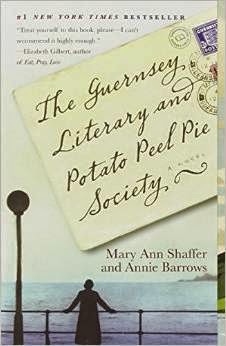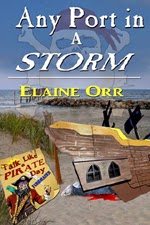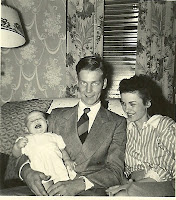As historian of the
Orr Reunion Association
of
Mount Vernon, Missouri, each year I do a short talk on some aspect of
our family's 180-year history on this continent. There is a lot of grist for
the mill, so to speak, and last year I talked about the many families that had
operated grain mills.
This year I looked at our immigration patterns, which were
quite varied. The first two families came from Aghadowey Parish in Londonderry
(in Northern Ireland, or Ulster if you live there) in the very early 1830s, and
came as complete family groups. These were the two oldest sons, and they had
enough money to pay for their passage, though not much when they arrived.
However, relatively inexpensive land was being offered for sale in several new
states, and hard work let them save money for farms (William and Jenny Orr in
Missouri and James and Jane Orr in Indiana).
Both of these families landed "at the mouth of the St.
Lawrence River," so their first, brief, taste of North America was in
Canada. People often ask me if they came through Ellis Island, but it wasn't
established until 1892 and America didn't limit immigration when most of our families came. As far as I know, the only records of our ancestors’ arrivals are ship
passenger lists. I have not found all of them.
Other families came decades later – from the 1860s to the
early 1890s. Without exception, they went where earlier families had settled.
The third family (George and Elizabeth Orr) came in 1860, just six months before
the Civil War started. They were said to have arrived at the Port of New
Orleans and traveled to Missouri. They arrived in Mount Vernon with modest
personal wealth and quickly bought land. George had taught school for 30 years,
and had tired of working in Ireland's schools. To be fair to the school system
there, he was considered very hard to get along with. In any event, his family
quickly scattered, with three adult sons going to Colorado. Only two daughters,
who married into Mount Vernon families, stayed near the other Orr families.
These first three families came for opportunity and
religious freedom. Presbyterians in Northern Ireland were sometimes locked out
of their churches for years and forced to worship in the Church of Ireland
(Anglican).
 |
| Campbell Blacksmith Shop, Ballylaggan |
The fourth family (Isabella
Orr Campbell and husband Ephraim) likely came for opportunity and
religious freedom as well.
Ephraim, who died en route and was buried at sea, was a blacksmith. The
Campbells brought a bag of money with them, but it was apparently stolen when
they were on the ship.
Mother and children were impoverished on arrival at Castle
Gardens in New York City in 1863, and went to the home of her brother George in
Mount Vernon. Isabelle died within weeks. This group of six immigrant children
were lucky to have made it to an area with relatives before they were orphaned.
They took good care of each other, and 1870 Census data showed two sons were blacksmiths in Mount Vernon.
The next two families came in very small groups, and they
sent teenage children before the parents came. Immigration was an economic necessity for them.
The family of Ann Orr Shirley and husband Valentine Shirley arrived over a thirty-five year period. They
had worked in the linen industry, and steam-powered looms made home looms
obsolete. For a time Ann and her
daughters supported the family with needlework, but Valentine and his sons
needed other jobs, and rural Ireland had few.
Daughter Isabella Shirley must have been a very brave woman,
for in 1857 (at age 17) she became the first of the Shirley family to sail to
the U.S. She went to the Philadelphia area, where she had Shirley cousins, and
worked as a servant. Her sister Jane came in 1859 at age twenty-eight.
Valentine and Ann did not come until 1870, and their daughter Sarah Shirley
Forsythe and husband John did not come until 1895. While the children of Sarah’s siblings were all born in the U.S., all of Sarah’s were born in Ireland, and several of
them came before their parents. The Shirley family stayed on the east coast,
largely in Pennsylvania and Massachusetts. Early on, many men worked in coal
mines and steel mills.
 |
| Lizzie Knox in America |
Martha was a sister of William, James, George, Ann, and
Isabelle, but she never came. Instead, two of her grandchildren (Sam and Lizzie
Knox) wrote to Uncle George to ask for financial assistance to come. Sam and
Lizzie were born long after William and James left Ireland (in fact, soon after
George and family left), and the Knox family had fallen on very hard times. The
Knox siblings came in 1883 and worked hard, Sam in the fields and at the Adams
Mill in Jasper County, which was owned by Campbell descendants. Lizzie worked as
a servant for a farm family in Lawrence County. Eventually they were able to
pay back great Uncle George and send for siblings and their widowed mother, who
came in 1887. This is especially impressive when you think that that Sam and
Lizzie left Ireland at about age seventeen.
It is interesting that George had a reputation for being
ill-tempered, yet he lent money to a number of the Knox children and sent money
monthly to a cousin in Aghadowey. That’s where Sam and Lizzie got his address.
Education levels varied widely among the Orr families. The
two brothers who came in the 1830s raised their children in a newly settled
Indiana or Missouri, and there were not well developed schools. Much is made of
the fact that William sent one son for higher education—and only one. George
taught school, so his children were schooled in Ireland.
The Campbell family came when most of their children were young, but
by that time there were well established schools in Lawrence and Jasper
Counties. Many members of succeeding
generations (even women in the 1930s!) went to college. William’s college-educated
son (John Adams Orr) was very close to his Campbell cousins.
Did the Orr family work hard when they got to America?
They did.
But they also had some luck. They were able to come without question,
and a young country welcomed them. I often wonder what would happen if we tried
to come today. The welcome mat would likely be smaller, and even our small
numbers of the nineteenth century would far exceed the immigration quotas of
the 21
st century. Would we try to sneak in, or be content with the
lack of jobs in Ireland today?
* * * *
To see more about this branch of the Orr family, go to
http://www.orrreunion.com or
http://www.elaineorr.com/Family_History.html
You can also visit the
Orr Reunion of Mount Vernon Facebook page. Finally we have done and print and electronic books about this large family, and links are on these pages. No one needs to buy information, however. Feel free to contact Elaine at elaineorr55@yahoo.com.
* * * * * *
Check out Elaine's web page or sign up for her newsletter 




















